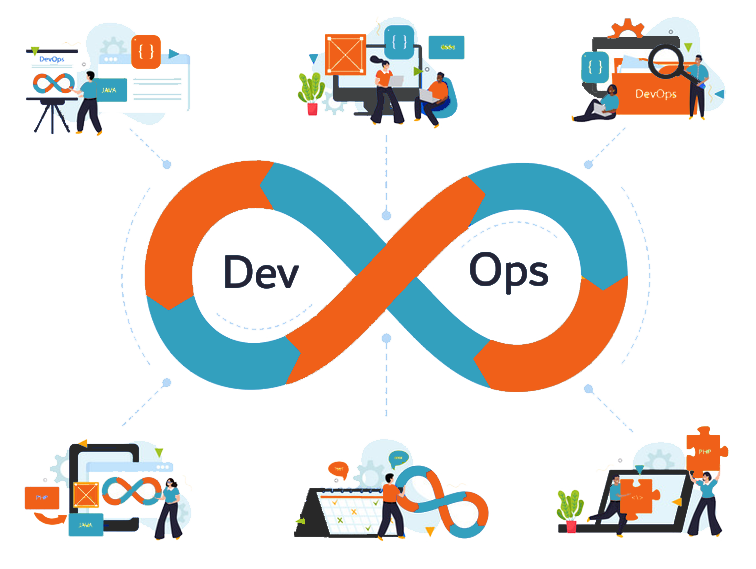
What is Devops
DevOps is both a cultural and technical approach to IT development cum operations management that’s been gaining popularity over the last decade or so. DevOps transformed the IT development and IT operations of an organization into a single role. It is rooted in cultural values and people skill sets rather than just a specific toolset, process, or developmental architecture.
Devops (Development and Operations) practice enabled organizations to deliver new IT services or Products at high velocity and at the same time manage and maintain existing deployments with ease. Organizations who embrace DevOps can also use employees’ time more efficiently.
How to Adopt Devops
To embrace DevOps fully, it takes time as it needs people skills and cultural shifts from traditional IT practice of being separate Development and operations teams. Also it’s essential to understand that it cannot just be implemented and forgotten about. Building a DevOps culture is a continuous process.

- Start small: Enterprises can begin by encouraging the adoption of DevOps principles on a small scale within certain groups (may be new applications or products). Once the model has been proved, expansion will follow.
- Improve Communication: Organizations need communication tools that can aggregate both human and machine data on the state of software and systems. The Devops tools should make it easy to understand the nature of an issue and coordinate responses in real-time.
- Focus on Integration: Enterprises that rely on legacy software, and struggle to coordinate operations across teams, should integrate their software tools and workflows as much as possible. This will help make data available to the personnel when they need it.
- Implement Flexible Roles: Members of different teams – from engineers to ITOps – should be equipped with the knowledge and communication skills to collaborate outside of their specialist areas.
Devops Journey
An organization’s DevOps journey typically follows the paths outlined below as it evolves from a basic embrace of DevOps values toward an advanced DevOps culture:

Software Delivery Practices
- Traditional: Waterfall model. Releases every 1-2 years. Deployments require planning.
- Beginning: Quarterly releases. Development and ITOps may interact, but changes require manual handoff.
- Intermediate: Coordination between Development, ITOps and QA. Deployments impact fewer services. Faster software releases and less downtime.
- Advanced: Continuous integration, deployment, and delivery. Releases throughout the day, zero downtime.
Troubleshooting Processes
- Traditional: Development/QA send ad hoc manual requests to ITOps. ITOps is not automatically notified of problems.
- Beginning: Development/QA have a process for sending requests to ITOps, but goals are uncoordinated.
- Intermediate: IT Ops enables some self-service access for Development. ITOps is engaged with Development for troubleshooting.
- Advanced: Teams collaborate throughout the software delivery lifecycle. Collective accountability for maximizing performance. Recovery is quick.
Environment and Tooling
- Traditional: Static test environments and manual change management. Incidents are handled on an ad hoc basis. No parity between development and production environments.
- Beginning: Some environment parity, automated build and testing, and automated alerts are in place. Alert response and escalations are manual.
- Intermediate: Service-oriented monitoring and automated test-and build are in place. Deployment may require specialized ITOps skillsets.
- Advanced: Complete automation across test-and-build. Incident response mobilization. Development and production environments are completely and automatically integrated.
Benefits of DevOps
DevOps Benefits can be broken down into six core values:

- Agility: The ability to adapt quickly to embrace new technologies and services, and seamlessly scale tools and processes.
- Collaboration: Breaking down organizational “silos” existing between developers, ITOps admins, and business stakeholders to enable cross-team collaboration.
- Code Ownership: By emphasizing the principle of “owning your code,” DevOps encourages developers to participate in all steps of software delivery, from writing and deploying code to monitoring applications in production.
- Automation: DevOps emphasizes the automation of processes, from code builds and deploys to application monitoring, driving better agility and collaboration.
- Continuous Learning: By collecting metrics and building continuous feedback loops, DevOps lets organizations constantly assess their performance and continuously improve.
- Communication: Effective, organization-wide communication is the foundation to implementing these values.
Achieving DevOps With Zapoj IT Event Management

DevOps adoption is only set to increase. However, in order to reap the benefits, organizations must build continuous improvement into their culture and commit to their ongoing DevOps journey. With Zapoj IT Event Management, organizations can build efficient communication into the core of their culture, enabling them to continue their DevOps journey.
Are youprepared to handle critical events? Signup for free
If you intersted to follow our blogs : Subscribe
